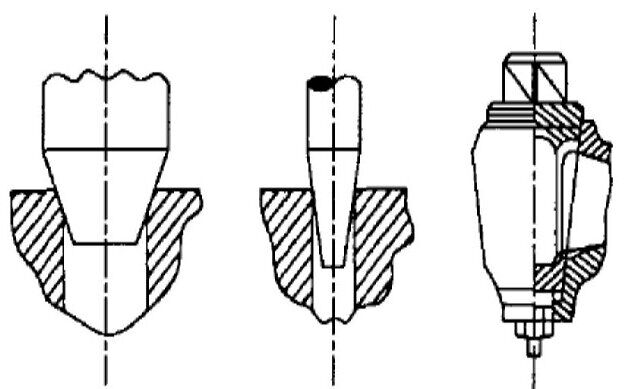The Role and Formation of Industrial Valve Internal Sealing Faces
On this page
Industrial valves play an indispensable role in modern industry, with one of their primary functions being the control and shut-off of medium flow. Among the many components of an industrial valve, the internal sealing face is the core element that ensures the valve's sealing performance. The internal sealing face must withstand the erosion and corrosion of the medium, and maintain its sealing effect under harsh conditions such as high pressure and high temperature. Therefore, understanding the function, formation, and various forms of the internal sealing face is crucial for the selection and maintenance of industrial valves.
The internal sealing of a valve refers to the part where the valve seat and the closing piece come into contact. During the use of the valve, the sealing face is constantly subjected to the scouring and corrosion of the medium, and friction and wear are also produced between the sealing pairs under the action of sealing pressure, making the working conditions quite harsh. One of the most widespread uses of valves in pipelines and equipment is to cut off the flow of the medium, where the valve is in a closed state, and there should be no excessive leakage between the sealing faces, so sealing is the main factor determining whether the valve has internal leakage.
The design of the internal sealing face not only needs to consider its wear resistance and corrosion resistance but also needs to ensure reliable sealing effects under various operating conditions. Therefore, selecting the appropriate materials and processing techniques is crucial for the performance of the valve sealing face.
The sealing face of a valve is usually composed of a pair of sealing pairs, one on the valve body and the other on the valve disc. There are several main methods for the formation of the sealing face.
The sealing face is machined directly on the valve body or valve disc. This method is simple and direct, but it requires higher material requirements and is usually suitable for low and medium pressure valves.
A sealing ring is machined from appropriate materials and then installed separately on the valve body and valve disc to form the sealing face. This method is highly flexible and suitable for various working pressures and media.
Another alloy material is clad on the valve body and valve disc, and the sealing face is formed by machining. This method can significantly improve the wear resistance and corrosion resistance of the sealing face, suitable for high pressure and high temperature valves.
Sealing faces are formed on the base metal by heat treatment methods such as nitriding, boriding, and chroming. By changing the composition and structure of the metal surface, its hardness and wear resistance are improved.
A layer of appropriate material or lining material is sprayed on the base metal, and the sealing face is formed by machining. Thermal spraying can endow the surface with excellent performance without changing the base material, and is widely used in various high-performance valves.
Valve internal sealing forms can be divided into several types according to the geometric shape of the sealing face, each with its own unique characteristics and scope of application.

The sealing face of flat sealing is a pair or two pairs of contacting planes. Under the pure flat sealing form, the valve seat surface is easy to contact, and the surface pressure is also stable, but it requires a larger closing force from the valve stem to the sealing face, so it is not suitable for high pressure occasions. Flat sealing is commonly used in shut-off valves, while the inclined plane sealing such as gate valves requires a smaller closing force, but the sealing face is prone to scratches, complex processing, and difficult maintenance.
The sealing face of conical sealing is a pair of contacting cones, with a small contact area, easy to seal, and good effect. Due to the taper of the valve seat, the pressure on it is greater than that of flat sealing, which is conducive to preventing medium leakage. However, appropriate heat treatment must be carried out on hard valve seats such as stainless steel to improve the hardness of the sealing face. Conical sealing is commonly used in general valves, while needle-shaped sealing faces are used in needle shut-off valves, and conical sealing faces are used in plug valves.
In spherical sealing, one or two of the contact faces are spherical, with good sealing effect, and even if the valve disc is slightly offset, it does not affect the performance of the valve seat sealing face. However, its sealing face is more difficult to process than flat and conical sealing. Spherical sealing faces are commonly used in ball valves and safety valves, and spherical sealing faces are used in valves with small diameters.
In arc sealing, one of the sealing faces is an arc surface, with good sealing effect, but processing and maintenance are more difficult. Arc sealing faces are mainly used in ammonia valves, and "O" ring sealing faces are used in parallel single gate valves and butterfly valves. This sealing form is suitable for occasions that require high sealing performance and corrosion resistance.
The sealing face of the knife-edge sealing face has a shape like a knife, and because it cannot withstand too much closing force, it is mainly suitable for vacuum valves and situations where the closing force is not large. The knife-edge sealing has a unique sealing method and is suitable for some specific industrial applications.
In summary, the design and formation of the internal sealing face of valves play a decisive role in ensuring the sealing performance of valves. By selecting appropriate materials and processing techniques, the wear resistance and corrosion resistance of valves can be greatly improved, thereby achieving reliable sealing under various working conditions. Understanding the different types of sealing forms and their applications helps to choose the most suitable valve in specific industrial applications, thereby improving the overall efficiency and safety of the system. In future valve design and application, continuously optimizing sealing face technology will be the key to improving valve performance and durability.

